Slamat, Indrapoera, Sibajak, Baloeran, Dempo
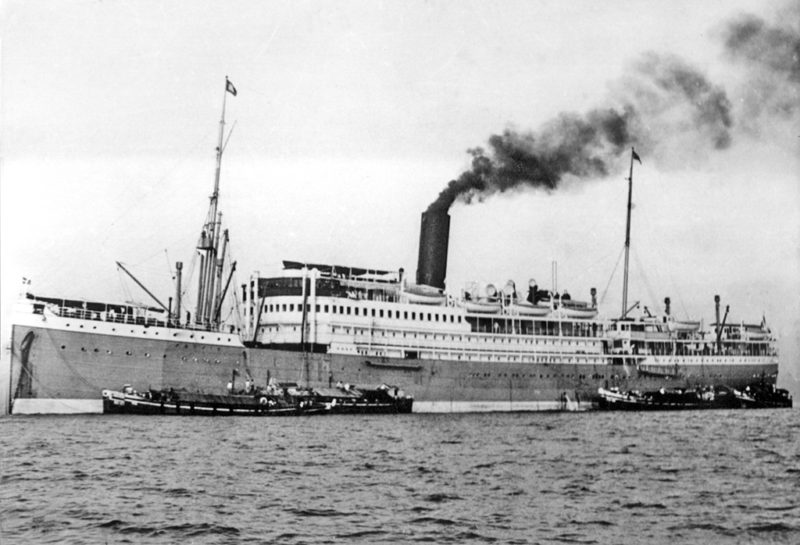
This Dutch fleet was very famous for its Far East services to the Dutch East Indies, with many of the ships named after volcanoes, towns and villages in Java and Sumatra. The fleet of passenger and cargo vessels with black funnels was known as Royal Rotterdam Lloyd in post-war years from 1947 to 1970, as Rotterdam Lloyd from 1883 to 1947, and as the management company of Willem Ruys & Zonen (Sons) from 1861. The founder Willem Ruys was born on 1st April 1809, the son of a clergyman, and during his long life of eighty years until his death on 5th August 1889 he operated a fleet of 23 sailing ships. He married Jeanette Ruys-Los and they had three sons Jan Daniel Ruys (born 1835), Willem Ruys (born 1837) and Daniel Theodorus Ruys (born 1841). The founder began in business in 1828 as a shipbroker, forwarding agent and insurance broker, and in 1839 became the part owner of a barque on the 64ths principle. The main trade was to the Dutch East Indies, but also to Mauritius, India, Singapore and with inducement to China, Japan, and to Australia. Willem Ruys announced his retirement on 15th March, 1867, and his three sons began the process of transforming the fleet from sailing ships into more reliable steamers after the opening of the Suez Canal in 1869.
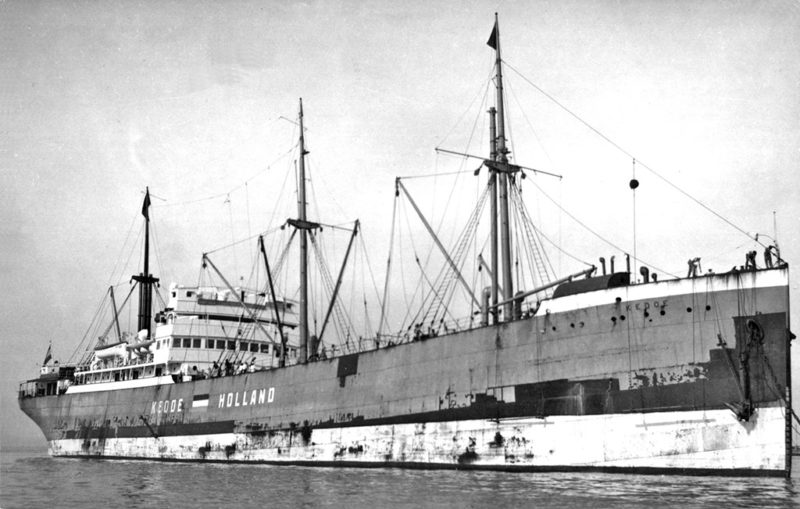
INTER-WAR YEARS
The Ruys family partners in control of the company in 1920 were the third Willem Ruys, the second Daniel Theodorus Ruys, Bernardus Eduard Ruys and Willem Ruys Bzn, son of Bernardus Eduard Ruys. Bernardus Eduard Ruys had been born on 6th March 1869 as a grandson of the founder, and married Wilhelmina Petronella van Hoboken on 14th September 1893, and they had three sons Willem (born 1894), Jacobus (born 1896) and Daniel Theodorus (born 1898). He was the Managing Director of both Rotterdam Lloyd and managers Ruys & Zonen, and a director of the KPM and JCJL shipping companies and of the Flushing shipbuilding yard of De Schelde, as well as a Commander of the Order of Oranje-Nassau.
The Royal Netherlands Mail service between Rotterdam and Java and Sumatra now called at Southampton, Lisbon, Tangier, Gibraltar, Marseille, Port Said, Suez Canal, Aden and Colombo. The Rotterdam Lloyd fleet in 1920 was now composed of nine passenger and mail steamers and 36 cargo ships with a further eight ships building. In addition, six tramps were registered under the Triton and Rotterdam Shipping Companies with a further three tramps building. The passenger and mail steamers were as follows:-
- Goentoer and sister Sindoro of around 5,600 grt and completed at Flushing in 1900 and 1902 with accommodation for 188 passengers in four classes.
- Tabanan and sister Tambora of around 5,500 grt and completed at Flushing in 1908 and 1910 with accommodation for 198 passengers in four classes.
- Kawi and sisters Rindjani and Wilis of around 4,800 grt and completed at Flushing during 1905/07 with accommodation for 178 passengers in four classes.
- Insulinde of 9,615 grt completed at Flushing in March 1914 with accommodation for 307 passengers in four classes. She had reopened the mail service to Java via the Suez Canal on 17th January 1919 and was given extra temporary accommodation as demand for passengers soared.
- The twin funnelled Patria of 9,891 grt completed at Flushing in August 1919 with accommodation for 334 passengers in four classes. She had her dummy funnel removed in 1928 and fitted on the new cargo ship Kota Pinang delivered at Amsterdam in May 1930.
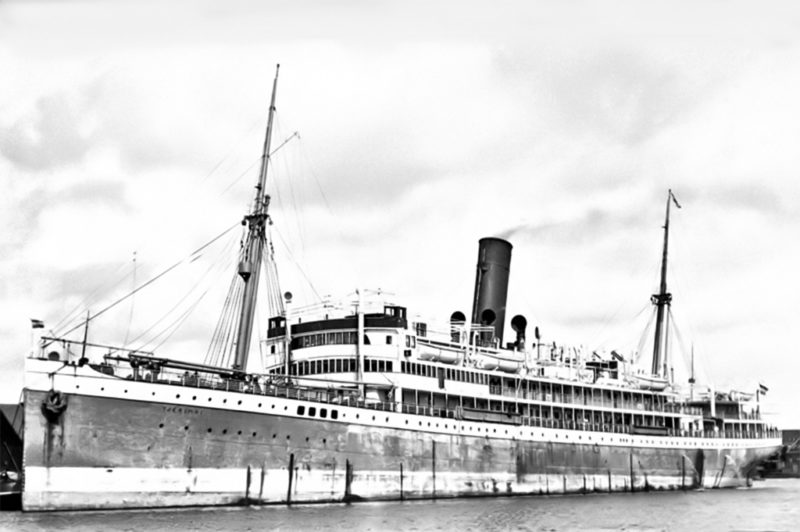
The ‘funnel-less’ motorship Kedoe of 3,714 grt was completed by the Burmeister & Wain yard at Copenhagen in November 1921 in order that the company could gain experience of motorships. She was twin screw and powered by twin 6 cylinder four stroke crosshead design B & W oil engines and cooled by oil to give a service speed of twelve knots.
The turbine powered tramp Turbinia of 5,450 dwt, completed in 1915 by the Rotterdam Dry Dock yard, arrived on 8th September 1923 at her builders yard for conversion into a motor vessel with a four cylinder two stroke Sulzer diesel engine installed. This was to test the reliability of this type of propulsion before a decision was taken to order these engines for the new passenger liner Indrapoera of 10,825 grt on order from the De Schelde yard at Flushing for delivery in 1925. The trials and service results were very successful, and further motorships were ordered or converted from steamers throughout the inter-war years.
Five new large passenger and mail liners and one purchased vessel were introduced to the Java service of Rotterdam Lloyd during the inter-war years. The purchased vessel was Tjerimai of 7,342 grt, launched as Marie Woermann in 1916 and laid up for the duration of the war, and completed in August 1920 at Hamburg and then ceded as a war prize to the British. She entered Rotterdam Lloyd service on 25th March 1922 with accommodation for 140 First Class passengers, 80 in Second Class, and 40 in Third Class. The forward part of her Bridge Deck was glassed in to give extra protection from the weather for her passengers and it was also extended aft. She had a crew of 180 but was a poor seaboat and not as popular or successful as her consorts on the Dutch East Indies service. She was consequently laid up in 1930 and sold in June 1933 to Misr Line of Alexandria and renamed El Nil for the Hadj pilgrim trade.
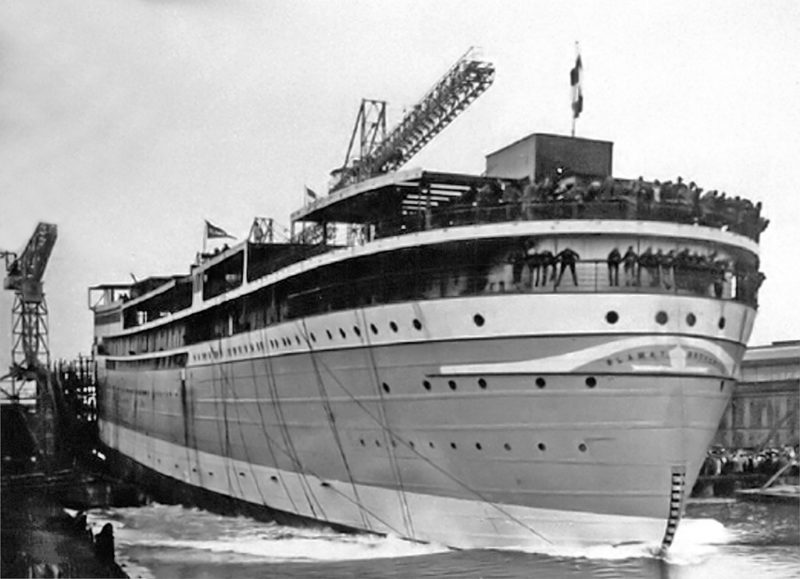
SLAMAT, INDRAPOERA and SIBAJAK
The twin funnelled liner Slamat of 11,406 grt completed in April 1924 was a very famous Dutch liner with a later famous war record. She had dimensions of length 510.1 feet, moulded beam of 62.0 feet and depth of 35.2 feet, and was a twin screw liner powered by twin Parsons double reduction geared steam turbines of 8,000 shp to give a service speed of 15 knots. She again was a product of the Flushing yard of De Schelde with three steel decks in her hull, a cruiser stern, with a fo’c’stle of length 80 feet and a combined bridge and poop deck of length 382 feet. She had good accommodation for 150 First Class passengers, 180 Second Class passengers and 70 in Third Class, a total of 400 passengers. She was equipped on the navigating bridge with wireless, direction finders and submarine signalling apparatus. She sailed from Rotterdam on 19th April 1924 on her maiden voyage for Java, her construction at Flushing had been in part to stave off unemployment at the De Schelde yard. She was dry docked at the Wilton Fijenoord yard at Schiedam in June 1931 to have 27 feet of her bow replaced by a Maierform bow. The turbines were overhauled and new propellers and rudders installed. She re-entered Rotterdam Lloyd service on 7th October 1931 and was a very popular liner.
Indrapoera of 10,772 grt was named after a volcano on Sumatra, and was completed in January 1926 by the same Flushing yard of similar dimensions to Slamat of overall length of 506.0 feet, moulded beam of 60.0 feet and moulded depth of 35.0 feet with a loaded draft of 28.9 feet. She had three steel decks in her hull with a fo’c’stle of length 95 feet, and a poop deck of length 116 feet. She was equipped on the navigating bridge with wireless, direction finders and submarine signalling apparatus. She had accommodation for 140 First Class passengers, 182 Second Class passengers and 68 in Third Class, and was the first motor liner for the Java mail run. She was twin screw and fitted with twin six cylinder two stroke Sulzer diesel engines of 9,000 bhp to give a service speed of 16.0 knots. She sailed from Rotterdam on 10th February 1926 on her maiden voyage and arrived in Java two days ahead of schedule. She had space in her holds for 318,000 cubic feet bale of cargo and carried 1,240 tons of fuel oil bunkers. She was withdrawn in September 1931 and re-engined by the Flushing yard with more powerful Sulzer diesels of 10,000 bhp to increase her service speed to 17 knots, and she was also lengthened. She was badly damaged by fire in port at Rotterdam on 27th November 1933 and her superstructure was repaired by the Wilton Fijenoord yard at Schiedam and a new bow was fitted.
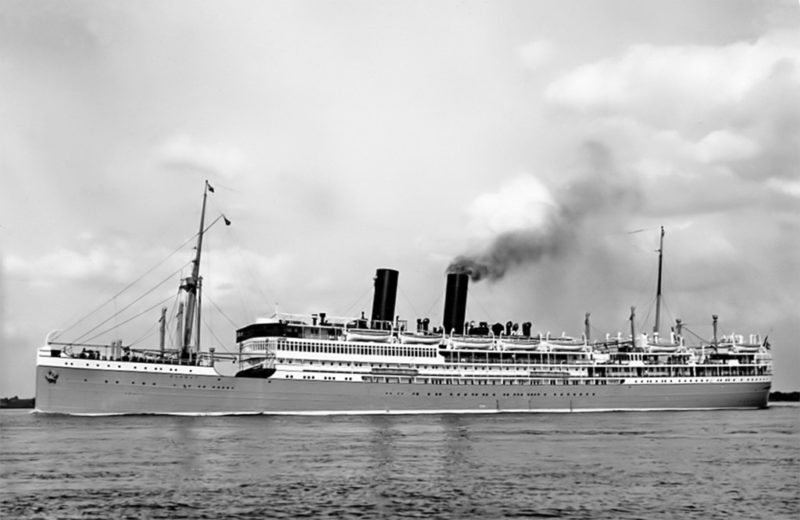
Sibajak of 12,040 grt was launched at Flushing on 2nd April 1927 by Mrs. T. Mees-Bouvin and named after a volcano on Sumatra. She was completed at Flushing as Yard number 181 in December 1927 at a cost of 6.8 million guilders, and her trials were run during snowstorms on 2nd January 1928 with a top speed of 17.65 knots achieved. She made a special one day shakedown cruise on 28th January 1928 with invited passengers and their guests. She sailed on her maiden voyage from Rotterdam under Capt. Boon to Java on 8th February 1928. She had dimensions of overall length 530.0 feet, moulded beam of 62.7 feet, and depth of 35.2 feet and a loaded draft of 28.0 feet. She had three steel decks in her hull with a forecastle of length 94.0 feet and a poop deck of length 143.0 feet. She had four holds with a bale cubic capacity of 586,556 cubic feet and a deadweight of 12,295 tons. She had accommodation for 212 First Class passengers, 174 Second Class passengers, and 68 in Third Class, a total of 454 passengers, with a crew of 209. She was equipped on the navigating bridge with wireless, direction finders, and submarine signalling apparatus.
Sibajak was a twin screw liner powered by twin eight cylinder two stroke Sulzer diesels of 10,400 bhp to give a service speed of 17 knots. Electricity was provided by three sets of diesel generators. She carried 1,700 tons of fuel oil bunkers, and had two tall masts with both derricks and electric cranes for cargo handling. She arrived back at Rotterdam from her maiden voyage on 24th April 1928, with receptions held onboard for Government officials at both Singapore and Batavia. She missed one round voyage in 1929 due to a damaged crankshaft, and during her annual refit in 1935 her passenger accommodation was refurbished. She also on every voyage made a passage along the North Java coast to load sugar at Sourabaya, an island on a beautiful bay. The special Rotterdam Lloyd ‘Rapide’ train was used by some Dutch passengers arriving at Marseille to avoid the rough Bay of Biscay weather back to Rotterdam, and also on the outward voyage. Sibajak was the Flagship of Rotterdam Lloyd until Baloeran and Dempo were completed in 1930 and 1931. Slamat had two funnels while her near sisters of Indrapoera and Sibajak had one, all three near sisters had seven decks for passengers, named as follows on Sibajak:-
- Sports Deck or Sun Deck had plenty of space for playing deck tennis, quoits or shuffleboard, and it was shaded by extensive overhead awnings for protection from the tropical sun, and had side protection from the wind.
- Boat Deck had the wheelhouse, chart room, and radio room with the Master’s Suite on the starboard side, followed by cabins for the First to Fourth Deck Officers, while on the port side were five First Class single berth cabins and one double berth cabin. Directly aft of these cabins was a partially covered verandah space with three vertical glass windows to port and starboard and furnished with cane tables and chairs. This spacious area was very popular with First Class passengers as the Javanese stewards were very attentive in bringing drinks and coffee.
- Promenade Deck could be reached by two highly decorated electric lifts with Art Deco decorated glass doors, glass sides, and sculptured steel motifs. The First Class Main Entrance Hall and Lobby was very stylish and impressive with a high dome and side windows to allow natural light to stream inwards. The dome had coloured glass and leather trims at its base to reinforce the Art Deco look. The First Class Grand Social Hall was forward of the Lobby and was a highly elegant semi-circular room constructed from beautiful timbers, and had Art Deco features. A high dome in the central part of the room had stained glass features and leather trims, with a grand piano playing below by a member of the ship’s orchestra and placed on a beautiful wool carpet and surrounded by fine carver chairs and round tables for four or six passengers on the wooden flooring. This elegant room was meant for socialising beneath the shields of many Dutch provinces e.g. Maastrict displayed around the sides of the dome.
- The First Class Reading and Writing Room was also on Promenade Deck aft of the Grand Social Hall and had two semi-circular sections each equipped with desks and carver chairs for two passengers. The elegant First Class Smoking Room had a bar along the aft wall with bar stools, and also had a central dome with beautifully timbered side sections, patterned wallpaper and the finest furnishings and chairs to make the room as relaxing as possible as a venue. The forward Promenade Deck had spacious glass enclosed walkways for half of its length to port and starboard, with the Children’s Playroom and creche just before the Second Class promenade space began. This latter had a verandah protected on both sides by windows, and was furnished with cane chairs and tables. The Third Class promenade space was aft of the Second Class space up to the stern rail, and again was mostly under cover, with the main stairwell by which they reached Promenade Deck in the middle of their Smoking Room.
- Bridge Deck ‘A’ had two beautiful De-Luxe First Class Suites forward with private bathroom and toilet, followed by two further First Class cabins with private bathroom and toilet. This group of four spacious First Class Suites was replicated by four similar First Class cabins ‘midships, while the main part of this deck was occupied by outside First Class cabins. The First Class space on this deck had two main stairwells, one forward and one aft, with the forward stairwell having the two beautiful glass and steel electric lifts with Art Deco motifs. Aft of this First Class area was the Second Class space with fifty cabins for two or three persons, and aft again was the Third Class space with ten cabins for a total of 28 passengers. The Second Class public rooms included the Main Lobby, Smoking Room with a bar for gentlemen with timbered construction and eight windows to port and starboard, Ladies Room, and Main Lobby with a stairwell up to Boat Deck or down to their Dining Room on ‘B’ deck.
- Upper Deck ‘B’ had long rows of First Class cabins to port and starboard for three quarters of its length, followed by a smaller number of Second Class cabins, some interchangeable with First Class cabins. The Third Class Dining Room was aft with diners seated at five long tables across the room, which was accessed by narrow stairs from the other decks.
- Intermediate Deck ‘C’ had the magnificent First Class Dining Room with 32 tables for diners, above which were two walk around viewing spaces with wrought metal balustrades to give a vertical space of three decks high. This beautiful dining room was well lit by light from above and from side lamps and table lamps. The First Class Grand Lobby was forward of the dining room with two electric lifts decorated by Art Deco features, while aft of the dining room was the First Class galley and bakery. The Second Class Dining Room was aft of the First Class Dining Room and had 25 tables for diners, and had fine timbered walls with some decoration as well as a steel ceiling. These Dining Rooms were used for breakfast, lunch and dinner, both served by attentive Javanese stewards. There were ten Second Class cabins to starboard and eleven Second Class cabins to port on this deck for two or three persons, while aft of the Second Class Dining Room were six Third Class four berth cabins.
- Lower Deck ‘D’ had Third Class cabins for up to six passengers as well as storerooms, all forward of the engine room spaces.
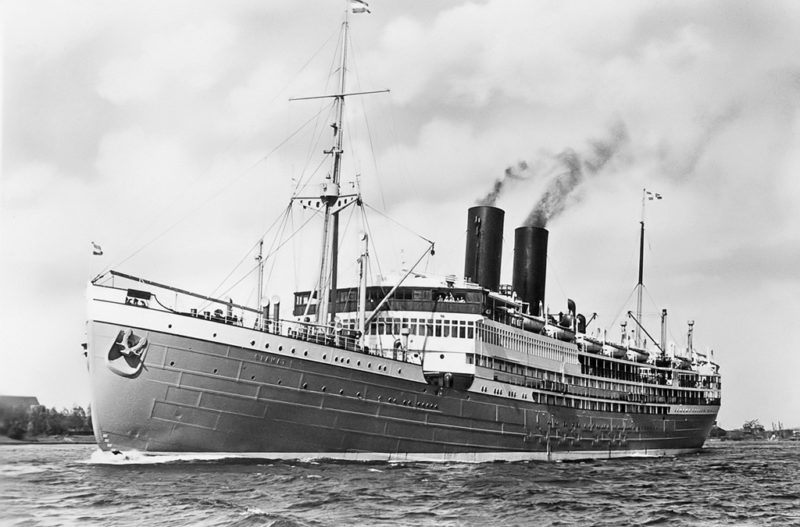
BALOERAN and DEMPO
The sister liners Baloeran and Dempo of 16,981 grt and built in 1930/31 were very good-looking vessels with broad motorship funnels and cruiser spoon sterns. They had accommodation for 262 passengers in First Class, 266 in Second Class, 70 in Third Class, and 68 in Fourth Class (Steerage) giving a total of 666 passengers with a crew of 335. They were ordered for the increased demand for passenger and express cargo space on the Java mail run. The hull of Baloeran was built as Yard number 313 by the Fijenoord yard at Schiedam because the locks at Flushing to the De Schelde yard, which were in the process of being enlarged, were still too narrow to take her full width. The dimensions of both sisters were length of 551.0 feet, moulded beam of 70.4 feet, depth of 41.6 feet and a loaded draft of 28.5 feet. They had four steel decks in their hulls, a cruiser spoon stern, a fo’c’stle of length 100 feet and a bridge deck of length 110 feet. They were equipped on the navigating bridge with wireless, direction finders, and submarine signalling apparatus. They were twin screw liners powered by twin ten cylinder two stroke Sulzer 10ST76 diesel engines of 14,000 bhp at 100 rpm built at the De Schelde machinery factory at Flushing to give a maximum speed of 18.8 knots and a service speed of 18.0 knots. The diesel engines were built side by side so that there would be no delays in their completion date. Four diesel generators of a total of 3,120 bhp at 170 rpm were fitted for the production of electricity. Fuel oil bunkers in the double bottom spaces and side tanks totalled 2,410 tons.
The keel of Baloeran was laid on 26th August 1928 and she was launched on 20th August 1929 by Mrs. H. Drooglever Fortuyn-Brunier, the wife of the Mayor of Rotterdam. All of the decks of her superstructure were in place at the launch, with her twin masts, funnel, engines, upper deck awnings and ventilators soon lifted into place at the fitting-out berth. She was completed on 22nd March 1930 and sailed via the North Sea Waterway (Nieuwe Waterweg) for trials in the North Sea under Capt. A. Dubois. The owner Willem Ruys was onboard as well as many other guests, the first to be allowed onboard this magnificent liner that had cost 12 million guilders to build. She was handed over after final painting and touching up on 9th April 1930. She was then loaded with cargo and stores for the Dutch East Indies at the ‘Lloyd Kade’ berth of Rotterdam Lloyd, with the passengers arriving on 16th April 1930.
Baloeran made her maiden voyage from Rotterdam to Java departing at 1700 hours precisely on 16th April 1930 under Capt. Boon. All relatives and friends of the passengers had to quickly disembark after the announcement on the public address system of ‘Final Call – all visitors ashore, please’. She was followed by Dempo from the De Schelde yard at Flushing on her maiden voyage in March 1931. They had space in their holds for 361,000 cubic feet of cargo, the homeward cargo being valuable spices and tropical goods. Their route to the Dutch East Indies from 1930 to 1937 took them from Rotterdam, Southampton, Tangier, Marseille, Port Said, Suez Canal, Colombo, to Sabang, Belawan Deli (Sumatra), Singapore and Jakarta, the port of which is called Tanjong Priok. Return voyages took approximately 105 days as cargo amounts varied widely and even included a few motor cars, lifted into the forward holds by slings with skids under each wheel. The second voyage of Baloeran to the Dutch East Indies sailed at 1700 hours on 23rd July 1930, a few days after she arrived back at Rotterdam from her maiden voyage. Lisbon was added to the port schedule between 1938 and the outbreak of war in September 1939.
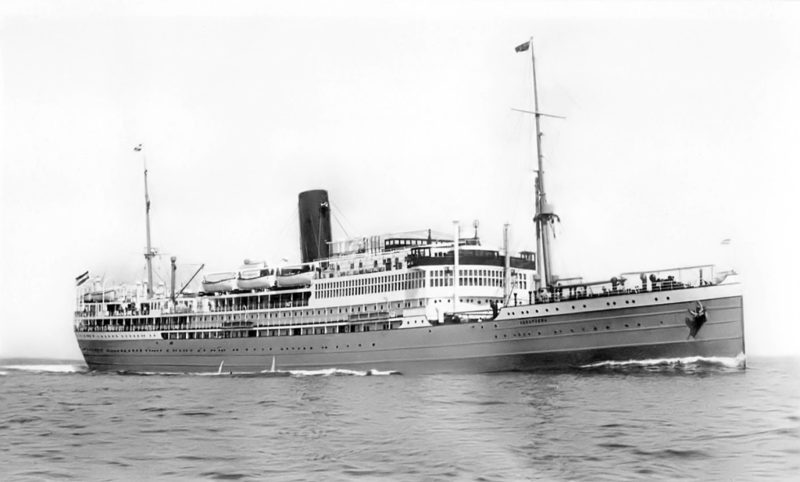
ART DECO INTERIORS OF BALOERAN AND DEMPO
On the seven passenger decks, the public rooms of this pair of sister liners were finished to a very high standard of décor, and thus they proved to be very popular on the Java express service. The well-known Dutch interior designer H. P. Mutters was in charge of the art deco interiors. The liners had seven decks for passengers as follows:-
- Sun Deck or Sports Deck with wheelhouse, chart room, Captain’s and Deck Officers quarters, with private deck space on both sides of the single funnel for First Class passengers to enjoy deck tennis, quoits and shuffle board as well as open air dancing to music in the evening.
- Boat Deck (A) was accessed by one of two lifts or by the First Class Main Stairwell. The Main lounge was forward with windows across the forward view over the bows, and only four windows to port and starboard. This room was used for daytime relaxation, parties, dancing to the music of 21 members of the ship’s orchestra, and indoor games e.g. horse racing, and table games e.g. backgammon, chess etc. The ship’s orchestra would also play in the evening at the art deco Great Social Hall on Promenade Deck. The Main Lobby had a bar just aft of it, with also toilets on this deck and above on Sports Deck. The Radio Room had Marconi transmitters and receivers with a waiting room for passengers wanting to send messages to home, as well as telephone private boxes. The music that played everywhere on the ship emanated from a Music Station at the side of the Marconi transmitters and receivers. There was also a photographic developing room aft on the starboard side. A spacious promenade space for Second Class passengers was aft, which was partly glazed and contained a Verandah with cane furniture and stairs leading to the Sun Deck above.
- Promenade Deck (B) had the magnificent art deco Grand Social Hall of circular shape forward, reached by the Main Stairwell with black painted steel rails to a design by J. H. Sikemeier. A statue of an art deco lady holding a tray aloft with a dozen lighted candles was at the foot of the grand staircase, with passengers seated at beautifully designed hexagonal tables with six seats with padded cushions. The ship’s orchestra of 21 members included a pianist playing on a grand piano. The First Class Smoking Room was just aft of the First Class Grand Social Hall, and was finished in dark walnut wood with much art deco carvings, as well as fine carpets, carver chairs and comfortable sofas. This room was square in shape with two side wings to port and starboard, and there was a bar on the aft wall, all designed by J. H. Sikemeier. A partial outside walk-around promenading space ended just aft of ‘midships after a dozen First Class spacious twin bedded or single cabins plus the First Class Children’s Playroom. Aft of the First Class area was the Second Class Lounges and promenading deck space. An important fact of these two Dutch liners was that all cabins, regardless of class, were outside cabins with no inside cabins. Cabins on the port side had even numbers, while those on the starboard side had odd numbers. The Ship’s Hospital, surgery and doctor’s room were in the stern section of Promenade Deck.
- The Second Class Smoking Room was on two decks, with the lower level containing art deco features, light coloured parquetry wooden flooring, with a viewing platform and bar looking forward, and impressive wall panelling in pink and red looking aft to the main stairwell. Aft of the Second Class Smoking Room were doors on both sides of the main stairwell that led outwards to the promenading spaces and the children’s playroom aft for second class passengers. Many couples would congregate here in the evenings for drinks on this promenade. The Second Class Social Hall and Music Room featured walnut timbers with marble art deco statues, yellow wall panels and ivory coloured ceilings lit by lights arranged around the ceiling and by side lamps.
- Upper Deck ‘C’. The First Class part was entirely occupied by cabins as well as two luxury Deluxe First Class Suites, one to starboard and one to port. These suites were very spacious and had a relaxing lounge area, bedroom, bathroom and a personal baggage room, all tastefully furnished. There were also two First Class twin bedded suites with windows facing forward over the beautiful tiled art deck swimming pool, together with a bathroom, toilet and washbasins. The aft cabins on this deck were twin bedded or single berth, with some having a bathroom, and others having interconnecting doors, which could be booked as a single unit with a lot more space. The Main Stairwell had lifts that ran from Shelter Deck (D) to Promenade Deck (B). There were 44 Second Class cabins on this deck of two, three or four berths, some cabins were of such quality that they were interchangeable as First Class cabins. All had wooden bunk beds, two washbasins with mirrors above and were all outside cabins with portholes.
- Shelter Deck (D) The Lobby, Lounge and Purser’s Office were aft of the dome of the First Class Dining Room, but not in the usual central section of the ship but forward on the starboard side. The Lounge had black wicker furniture, a grand piano, and glass topped tables with carver chairs for four seated passengers. The First Class Barber Shop for gentlemen and the Ladies Hairdressing Salon were aft on the starboard side. The Second Class Main Entrance Hall led to a most beautiful wooden balustrade that looked down into the Second Class Dining Room. This beautiful room was two decks high, with the floor on ‘E’ deck that contained a beautiful long art deck mural depicted Eastern scenes behind the main long serving table. Passengers were seated at table settings for four, six, eight, ten or twelve persons to make a truly impressive venue for dinner. An exit door on the starboard side led to the Second Class hairdressers for both sexes and the remainder of this deck contained two and three berth cabins, with the Second Class Purser’s Office aft.
- Bridge Deck ‘E’ had the base of the three deck domed First Class Dining Room forward, extending upwards through ‘D’ and ‘C’ Decks with intricate detailed metal balustrades and topped with wooden rails, with truly amazing lights representing the stars of the heavens in the top of the dome. Walnut wooden carver chairs had delicate silk brocade upholstery. The Grand Stairwell from the upper decks to this lovely First Class Dining Room had stunning decors and style, and the sweeping last dozen stairs into the room allowed First Class passengers to make an impressive entrance. It also had the base of the two deck Second Class Dining Room, with both lovely rooms having walnut panelling and art deco style touches and furniture by the renowned Dutch interior designer J. H. Sikemeier.
- Lower Deck (F) had all of the Third Class cabins for Third Class and Fourth Class (Steerage) passengers. Third Class passengers used the stairs to their Smoking Lounge and Bar on Upper Deck ‘C’, with their Dining Room on Shelter Deck (D) with all eating in a single sitting, with this room also used as a lounge. Four Third Class cabins were on ‘E’ deck, and twent-two Third Class cabins for two, three or four passengers were on ‘F’ deck. Fourth Class cabins were under the fo’c’stle on Shelter Deck (D) with stairs leading to an open deck space forward of the superstructure. Fourth Class cabins were very basic with six berths arranged in three double bunks, communal toilets and showers were on ‘D’ deck, and their small lounge, smoking room, bar and dining room were on ‘E’ deck.
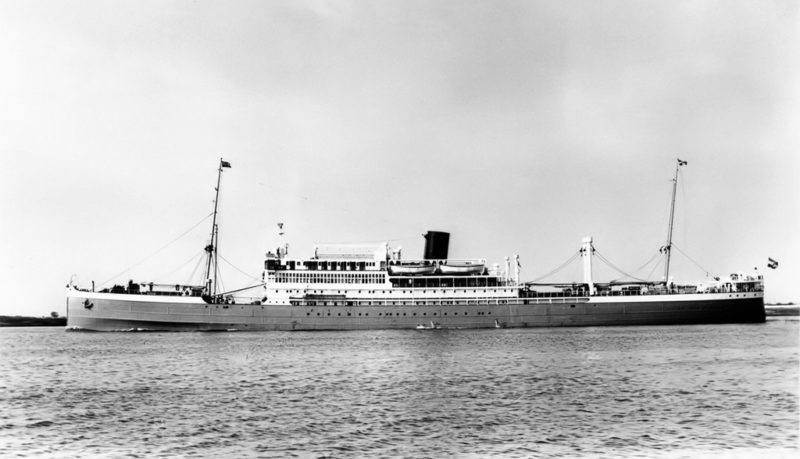
Baloeran unfortunately collided with the cargo ship Silverbeech on her Silver Java Pacific Line service while leaving Sourabaya on 17th March 1931. The damage was repaired there provisionally and she then made a record twenty four day, twenty hour passage back to Rotterdam for full repairs to be made. Dempo suffered a fire at Rotterdam on 6th July 1932 which delayed her departure for a week. The Rotterdam Lloyd fleet on the outbreak of war on 3rd September 1939 numbered 32 ships with five passenger and mail liners and 27 cargo ships. Sibajak made her last arrival at Rotterdam on 15th November 1939 until after six years of war service as a trooper she returned again as one of the only two survivors of five liners, along with Indrapoera, the other three inter-war Rotterdam Lloyd liners being sunk by enemy action while in service as troopers or hospital ships on the German side or the Allied side.
Baloeran and Kota Pinang were captured at Rotterdam on 13th May 1940 during massive German air attacks. Baloeran was used as a hospital ship after conversion at the Wilton Fijenoord yard but was mined and beached north of Ijmuiden in September 1943, the wreck being bombed and gutted by British planes. Kota Pinang was used as a reconnaissance and supply ship by Germany until sunk by the British cruiser Kenya 750 miles west of Cape Ortegal in the Azores on 3rd October 1941.
Kertosono was captured off Cape Verde Islands on 1st July 1940 by raider Thor, the former Santa Cruz of Oldenburg Portuguese Line. She was on a voyage from New Orleans to Curacao, was converted into a U-boat depot and armaments supply ship and bombed and sunk at Nantes by Allied aircraft on 23rd September 1943.
Buitenzorg stranded near Gray Island, Sound of Mull on 14th January 1941 while on a voyage from New York to Dundee via Oban. She hit a rock that ripped open her bottom, then slipped off into deep water and sank, crew saved.
Tapanoeli was torpedoed and sunk off the Cape Verde Islands on 17th March 1941 while on a voyage from Java to Glasgow with general cargo, crew of 75 saved.
Slamat under Capt. Tjalling Luidinga was bombed and sunk off Nauplia on 27th April 1941 during the evacuation of troops to Alexandria. She arrived at Nauplia to embark her troops but was bombed by JU88 aircraft in the morning, set on fire and abandoned as the blaze got out of control. The crew and six hundred troops were taken off by the British destroyers Diamond and Wryneck, which were both then sunk by German bombers. Slamat had been sunk by torpedo from the destroyers, but the total of men that survived was only 50 out of 600 troops, 193 crew of Slamat and 250 naval crew of the destroyers. This was the most horrendous loss of Dutch and British men in the history of the Dutch Merchant Navy, an act that is commemorated by services attended by survivors and their families, as well as the Ruys family of shipowners.
Sitoebondo was torpedoed and sunk on 30th July 1941 180 miles south of the Azores while on a voyage from London and Oban to Table Bay and Calcutta with general cargo, 17 crew and 2 passengers lost.

Kota Radja was bombed and sunk by Japanese aircraft at Sourabaya on 24th February 1942. She had loaded 2,500 tons of rubber at Singapore for a voyage to the U.S. West Coast but the Japanese advance caught up with her.
Bengalen was scuttled at Sourabaya on 2nd March 1942 to avoid sinking by Japanese aircraft, her officers wished to sail but the native crew refused.
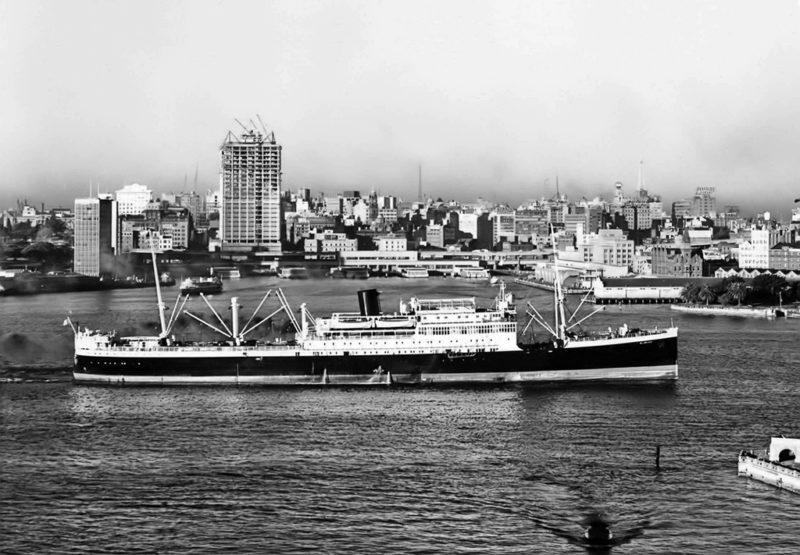
Modjokerto was torpedoed by Japanese submarine I-54 to south of Tjilatjap while fleeing to Fremantle, she was then sunk by gunfire from the Japanese cruiser Chikuma. Her crew captured and all executed by firing squad.
Siantar was torpedoed and sunk by Japanese submarine I-1 on 2nd March 1942 800 miles to south of Tjilatjap while fleeing to Fremantle with 21 crew lost out of 61 with survivors taken to Australia.
Soekaboemi was torpedoed and sunk in North Atlantic on 28th December 1942 while on a voyage from Glasgow to Bahia and Bombay with general cargo, 1 lost.
Djambi was lost while manoeuvring to avoid a torpedo on 13th March 1943. She collided with Silverbeech off Freetown in a large forty ship convoy from Liverpool. The crew were picked up but Silverbeech was herself torpedoed and sunk two weeks later with heavy loss of life.
Blitar was torpedoed and sunk in the North Atlantic on 5th April 1943 while on a voyage from Buenos Aires and New York to Liverpool with general cargo, cowhides, fertiliser and foodstuffs, 26 crew lost.
Kota Tjandi was torpedoed and sunk off Freetown on 30th April 1943 in convoy TS37 while on a voyage from Haifa and Cape Town to Takoradi, Freetown and the U.K. with general cargo, rubber, potash and tea, 6 crew lost.
Dempo was torpedoed and sunk by U-371 on 17th March 1944 off North Africa while trooping from Naples to Oran in convoy SNF 17, all crew and service personnel saved.
Garoet was torpedoed and sunk on 19th June 1944 in the Indian Ocean while on a voyage from Bombay and Mormugao to Durban with groundnuts, 79 crew and 9 gunners lost.
Palembang struck a submerged object when leaving Alexandria on 6th November 1944 and sank the next day, all crew saved.
In addition, eight ships were managed for the war effort, and all were lost including Stjerneborg of C.K. Hansen of Denmark.
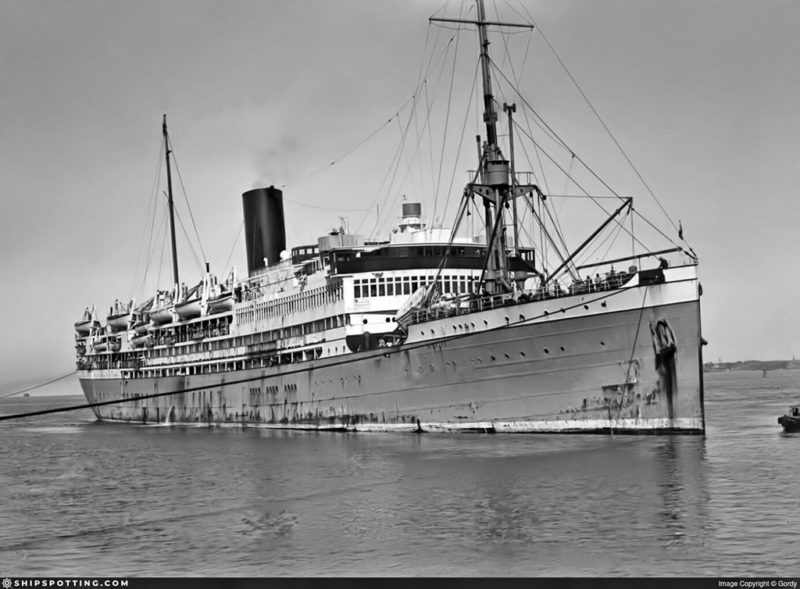
POST-WAR YEARS
Sibajak was employed between 1947 and 1951 on Dutch repatriation duties and as a migrant carrier at first between Europe and New York and Canada, and then from Europe to Australia and New Zealand.
She was given a thorough refit at Rotterdam in August 1951, and converted to a one class liner to resume on the Rotterdam to the Dutch East Indies for Royal Rotterdam Lloyd, and also served on other routes. She was sold for £180,000 at the end of August 1959 to Hong Kong breakers and made her last voyage to the Far East under the command of Capt. J. C. Flach.
Indrapoera returned to Rotterdam on 27th October 1945 after extensive trooping service, and was reconstructed by the De Schelde yard at Flushing in 1948 with her passenger accommodation limited to only 98 passengers and with her cargo capacity increased. On 13th August 1949 she returned to the Royal Rotterdam Lloyd service from Rotterdam to Java until 20th July 1956, when she was sold for £202,500 to Panamanian owners and towed to the Waalhaven in Rotterdam to be laid up under the name of Asuncion. She was then sold three months later to Costa Line of Genoa and renamed Bianca C and given extra cruise passenger capacity.
In 1958, she was chartered to Messageries Maritimes and renamed Melanisien to augment their Marseille to Tahiti service with accommodation for 96 First Class, 148 Second Class, and 68 Third Class passengers with an Italian crew and Messageries Maritimes deck and engineering officers. She was sold in October 1963 for breaking up by CN Santa Maria at La Spezia in Italy.
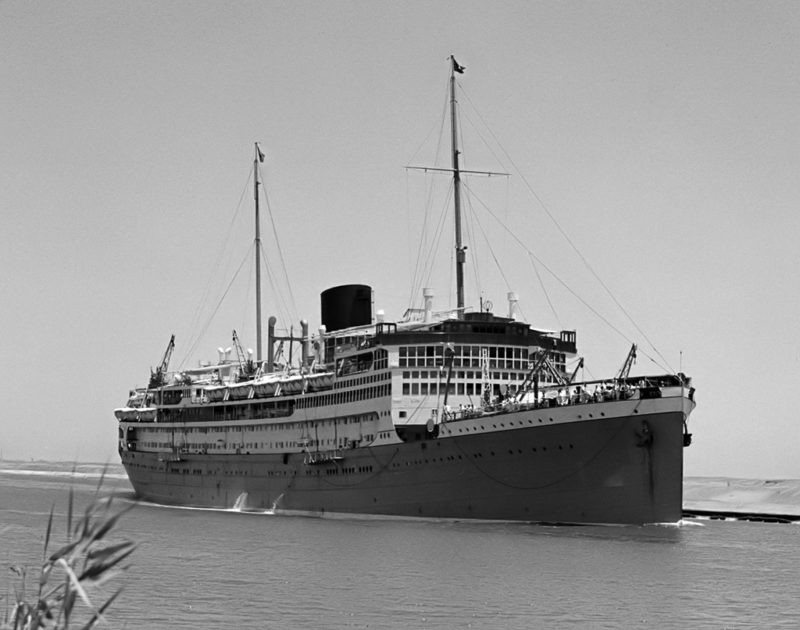
The Ruys family ordered the hull of their new liner Willem Ruys to be named after the member of the family executed by the Germans during the war, and which had lain incomplete on her slipway during the war at the Flushing yard of De Schelde.
She was launched on 1st July 1946 and delivered on 21st November 1947, and on this occasion Queen Wilhelmina of Holland announced that the company had been granted the honour of ‘Royal’ to its title, becoming Royal Rotterdam Lloyd (Koninklijke Rotterdamsche Lloyd). A yellow crown was added to the top white square of the Royal Rotterdam Lloyd houseflag, a chequer board of eight red and white squares, with the central square being blue with ‘RL’ in white.
Bernardus Eduard Ruys died on 16th September 1949 aged 80 years, he was a grandson of the founder Willem Ruys and had served 47 years as a RL director. The Ruys family partners in post-war years were Theodorus A.W. Ruys, Bernardus Eduard Ruys, Luuk P. Ruys, Luuk A. Ruys and J. D. Ruys, son of Willem Ruys Bzn. The younger Bernardus Eduard Ruys served as Chairman of the Holland Committee of Lloyd’s Register of Shipping until after the formation of the Nedlloyd Group.
The new twin funnelled passenger liner Willem Ruys had an overall length of 631 feet, moulded beam of 82.3 feet, and depth of 29.25 feet, and was powered by eight two stroke eight cylinder Sulzer diesels of a total power output of 38,000 bhp and achieved a maximum speed on trials of 24.62 knots. She had accommodation for 869 passengers in four classes and a crew of 471 with the lower position of her twelve lifeboats an innovation at her time of design. She was given two tall masts and a combination of electric cranes and derricks for cargo handling.
However, the Dutch East Indies gained their independence in 1949, and passenger numbers on the traditional Royal Rotterdam Lloyd service dwindled away until she was transferred in May 1958 to run on the profitable North Atlantic run to New York, and later to Quebec and Montreal, and finally on a Round the World service after rebuilding by the Wilton Fijenoord yard at Schiedam in Rotterdam.
She was sold to Lauro Line in January 1965 and renamed Achille Lauro to begin a cruise ship career of thirty years. The end came on 2nd December 1994 while cruising off the Somalian coast, she suffered a devastating fire and sank after all of her 1,090 passengers and crew were taken off.
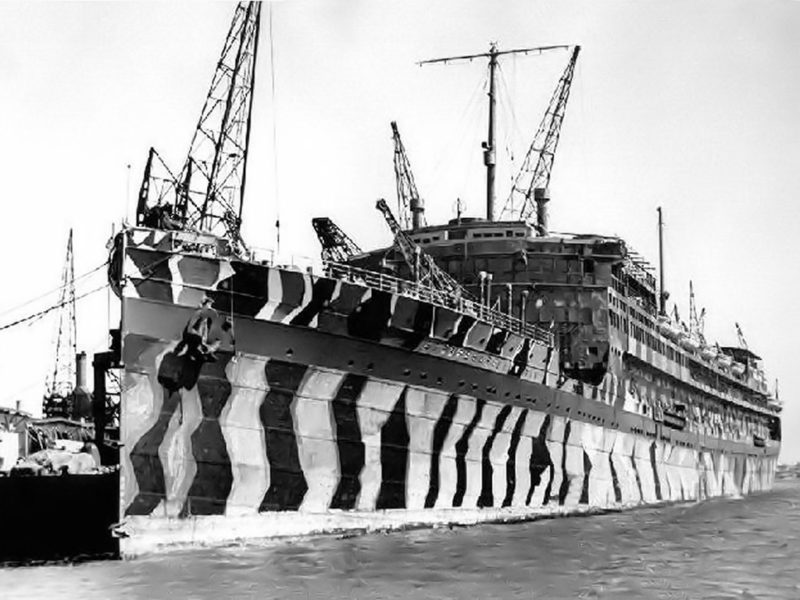
SUMMARY
Royal Rotterdam Lloyd had participated in the lucrative passenger, spices and tropical goods trade from Java and Sumatra for 130 years from 1828 to 1958. Dutch traders, politicians and troops in huge numbers had secured the Dutch East Indies as a Dutch colony with a capital at Batavia, later renamed Djakarta, with the main port of Tandjong Priok a few miles away from the capital on the coast of Java.
The five inter-war Dutch liners featured in this article were built during that wonderful Art Deco period from 1924 to 1930, with classic artistic designs in all of the public rooms, lifts and First Class De-luxe cabins. The huge cruise liners of today have a very different art content in very bright, coloured and modern designs on the walls of their dining rooms and lounges.
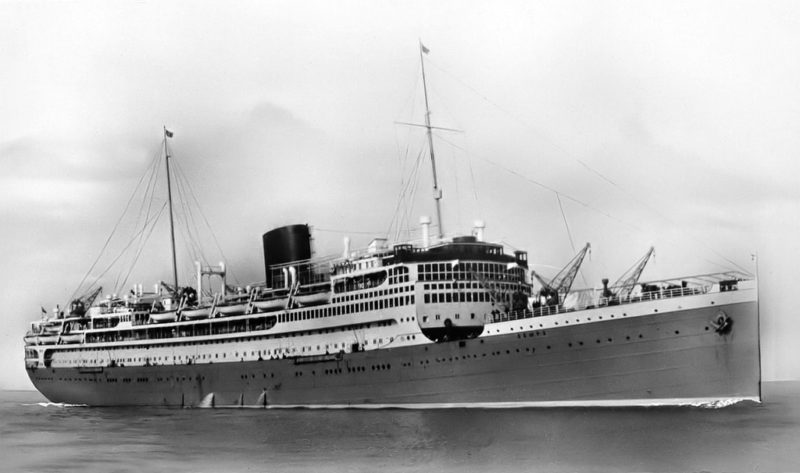

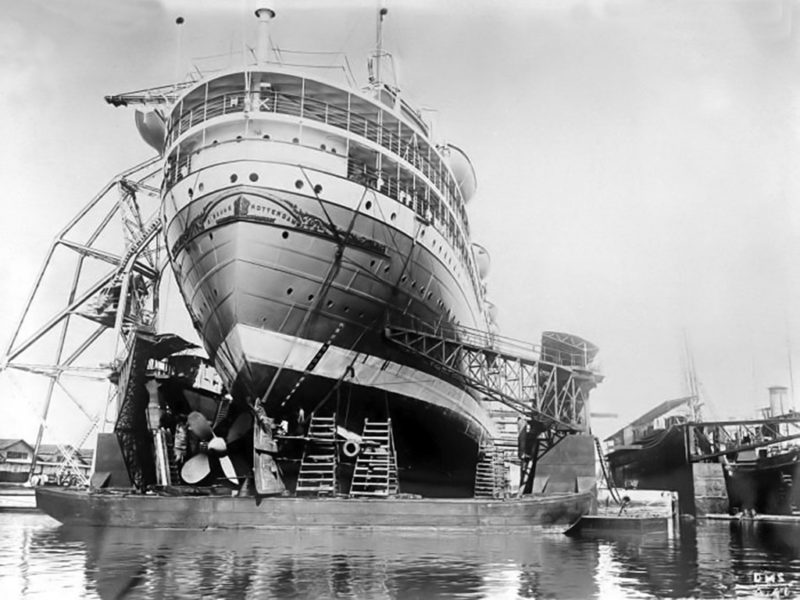
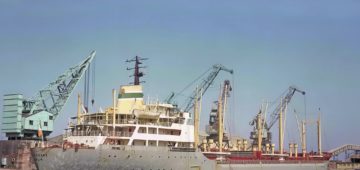



Comments
Sorry, comments are closed for this item